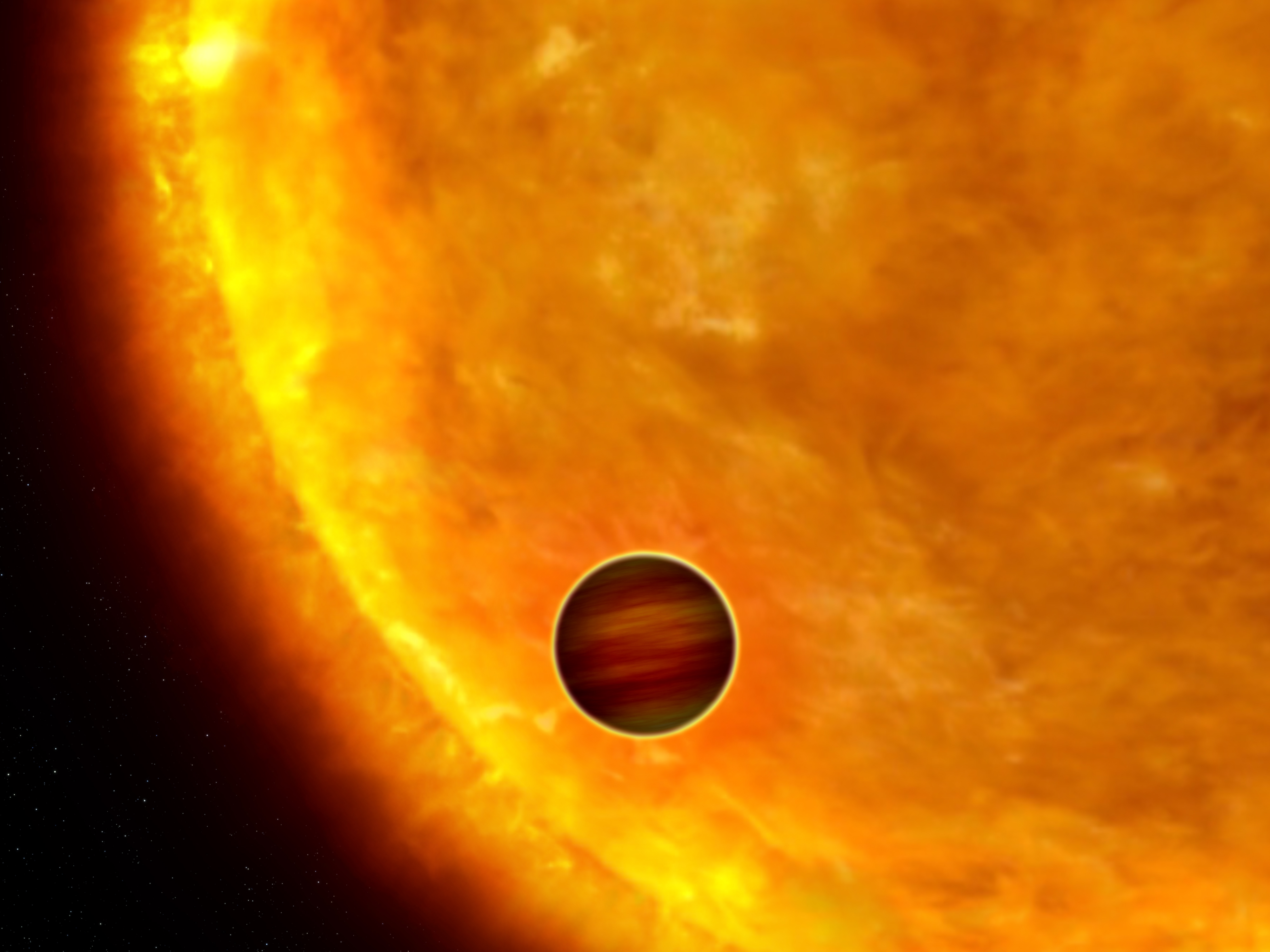- COROT-Exo-1b
Planetbox begin
name = COROT-Exo-1bPlanetbox image

caption = An artist's impression of COROT-Exo-1 b
passing in front of its parent star.Planetbox star
star =COROT-Exo-1
constell = Monoceros
ra = RA|6|48|19.17cite journal |url=http://cdsads.u-strasbg.fr/cgi-bin/nph-bib_query?2008A%26A...482L..17B&db_key=AST&nosetcookie=1 |author=Barge "et al." |title=Transiting exoplanets from the CoRoT space mission. I. CoRoT-Exo-1b: a low-density short-period planet around a G0V star |journal=Astronomy and Astrophysics |volume=482 | issue = 3 |year=2008 |pages=L17–L20 ]
dec = DEC|−3|06|07.78
dist_ly = 1,560
dist_pc = 480
class = G0VPlanetbox orbit
separation =
position_angle =
semimajor = 0.025±0.001 [The paper gives the semimajor axis as 4.92 ± 0.08 times the radius of the star, which is estimated at 1.11 ± 0.05 solar radii]
semimajor_no_units =
eccentricity = ~0
period = 1.5089557±0.0000064
period_year =
inclination = 85.1±0.5
ang_dist =
long_peri =
arg_peri =
t_peri =
t_peri_no_jd =
t_transit = 2454159.4532±0.0001
t_transit_no_jd =
t_approach =
semi-amp = Planetbox character
mass = 1.03±0.12
mass_earth =
radius = 1.49±0.08
radius_earth =
density = 380±50
gravity = 11.5 [Calculated using Newtonian gravity: ]
gravity_earth =
temperature = 1,898±50Planetbox discovery
discovery_date =1 May 2007
discoverers = Barge "et al."
discovery_method = Transit
discovery_site = flag|France
discovery_status = ConfirmedPlanetbox catalog
names = GSC 04804-02268bCOROT-Exo-1b, sometimes cataloged as CoRoT-Exo-1b or GSC 04804-02268b, is an
extrasolar planet approximately 1,560light-year s away in theconstellation of Monoceros. The planet was discovered orbiting theyellow dwarf star COROT-Exo-1 in May of 2007. The planet was the first discovery by the French-ledCOROT Mission.Detection and discovery
Planetary radius
radius = 149The planet was announced by the
COROT mission (aCNES project withEuropean Space Agency participation). The planet, one of the largest ever known is an enormoushot jupiter , about 1.49 times the radius ofJupiter and approximately 1.03 times as massive, based on ground observations of the star. Its huge size is due to its low density combined with the intense heating of its parent star causing the outer layers of the atmosphere to bloat.See also
*
51 Pegasi b
*COROT
*COROT-Exo-2b
*TrES-1 Notes and references
External links
*
*
*
Wikimedia Foundation. 2010.
